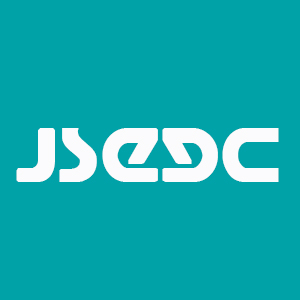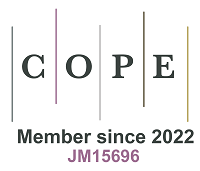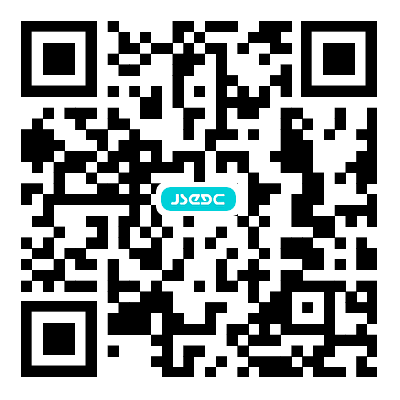REFERENCES
1. Rajala R, Westerlund M, Lampikoski T. Environmental sustainability in industrial manufacturing: re-examining the greening of Interface's business model. Journal of Cleaner Production 2016;115:52-61.
2. Trujillo-gallego M, Sarache W, Sellitto MA. Identification of practices that facilitate manufacturing companies’ environmental collaboration and their influence on sustainable production. Sustain Prod Consum 2021;27:1372-91.
3. Yasmeen H, Wang Y, Zameer H, Ismail H. Modeling the Role of Government, Firm, and Civil Society for Environmental Sustainability. In: Management Association IR, editor. Developing Eco-Cities Through Policy, Planning, and Innovation. IGI Global; 2020. pp. 62-83.
4. Barr S. Environment and society: sustainability, policy and the citizen. London: Routledge; 2016.
5. Camilleri MA. Corporate sustainability and responsibility: creating value for business, society and the environment. AJSSR 2017;2:59-74.
6. Fraunhofer Institute for Machine Tools and Forming Technology. Energy efficiency in production: future action fields. Available from: https://www.iwu.fraunhofer.de/content/dam/iwu/en/documents/EffPro_en.pdf [Last accessed on 28 Sep 2022].
7. United Nations. United Nations framework convention on climate change. Available from: https://unfccc.int/ [Last accessed on 28 Sep 2022].
8. UNFCCC. Annual report 2020. Available from: https://unfccc.int/annualreport [Last accessed on 28 Sep 2022].
9. European Commission. European climate law - achieving climate neutrality by 2050. Available from: https://ec.europa.eu/info/law/better-regulation/have-your-say/initiatives/12108-European-climate-law-achieving-climate-neutrality-by-2050_en [Last accessed on 28 Sep 2022].
10. Cifuentes-Faura J. European Union policies and their role in combating climate change over the years. Air Qual Atmos Health 2022;15:1333-40.
11. National Academies of Sciences, Engineering, and Medicine. Accelerating decarbonization of the U.S. energy system. Available from: https://nap.nationalacademies.org/catalog/25932/accelerating-decarbonization-of-the-us-energy-system [Last accessed on 28 Sep 2022].
12. Rachuri S, Jain S. Maturity model concepts for sustainable manufacturing. Available from: https://www.nist.gov/publications/maturity-model-concepts-sustainable-manufacturing [Last accessed on 28 Sep 2022].
13. Mani M, Lyons K, Sriram R. Developing a sustainability manufacturing maturity model. Available from: https://tsapps.nist.gov/publication/get_pdf.cfm?pub_id=906033 [Last accessed on 28 Sep 2022].
14. Ngai E, Chau D, Poon J, To C. Energy and utility management maturity model for sustainable manufacturing process. Int J Prod Econ 2013;146:453-64.
15. Duflou JR, Sutherland JW, Dornfeld D, et al. Towards energy and resource efficient manufacturing: a processes and systems approach. CIRP Annals 2012;61:587-609.
16. Matsunaga F, Zytkowski V, Valle P, Deschamps F. Optimization of energy efficiency in smart manufacturing through the application of cyber-physical systems and industry 4.0 technologies. J Energy Res Techn 2022;144:102104.
17. Nota G, Nota FD, Peluso D, Toro Lazo A. Energy efficiency in industry 4.0: the case of batch production processes. Sustainability 2020;12:6631.
18. Ammar M, Haleem A, Javaid M, Walia R, Bahl S. Improving material quality management and manufacturing organizations system through Industry 4.0 technologies. Mat Today: Proc 2021;45:5089-96.
19. Ammar M, Haleem A, Javaid M, Bahl S, Verma AS. Implementing Industry 4.0 technologies in self-healing materials and digitally managing the quality of manufacturing. Mat Today: Proc 2022;52:2285-94.
20. German Water Partnership. Water 4.0. Available from: https://germanwaterpartnership.de/en/arbeitskreise/arbeitskreis-en-wasser-4-0/ [Last accessed on 28 Sep 2022].
21. Kijak R. Water 4.0: Enhancing Climate Resilience. In: Brears RC, editor. The Palgrave Handbook of Climate Resilient Societies. Cham: Springer International Publishing; 2021. pp. 435-73.
22. Yang F, Huang Z, Huang J, Wu C, Zhou R, Jin Y. Tanning wastewater treatment by ultrafiltration: process efficiency and fouling behavior. Membranes (Basel) 2021;11:461.
23. Basili V, Trendowicz A, Kowalczyk M, et al. Aligning organizations through measurement: the GQM+strategies approach.
24. Basili VR. Software modeling and measurement: the goal/question/metric paradigm. Available from: https://drum.lib.umd.edu/handle/1903/7538 [Last accessed on 28 Sep 2022].
25. Basili V, Caldiera G, Rombach HD. Goal question metric (GQM) paradigm. Available from: https://onlinelibrary.wiley.com/doi/abs/10.1002/0471028959.sof142 [Last accessed on 28 Sep 2022].
26. Fuggetta A, Lavazza L, Morasca S, Cinti S, Oldano G, Orazi E. Applying GQM in an industrial software factory. ACM Trans Softw Eng Methodol 1998;7:411-48.
27. Beer A, Felderer M. Measuring and improving testability of system requirements in an industrial context by applying the goal question metric approach. Proc the 5th Int Workshop Requir Engin Test ;2018:25-32.
28. Yahya F, Walters RJ, Wills GB. Using goal-question-metric (GQM) approach to assess security in cloud storage.
29. Brito DF, Barcellos MP, Santos G. Investigating measures for applying statistical process control in software organizations. J Softw Eng Res Dev 2018:6.
30. Chang BM, Son JC, Choi K. A GQM approach to evaluation of the quality of smartthings applications using static analysis. KSII TIIS 2020:14.
31. Basili V, Heidrich J, Lindvall M, Munch J, Regardie M, Trendowicz A. GQM+ strategies - aligning business strategies with software measurement. Available from: http://dx.doi.org/10.1109/ESEM.2007.66 [Last accessed on 28 Sep 2022].
32. Basili V, Heidrich J, Münch J, et al. GQM+strategies: a comprehensive methodology for aligning business strategies with software measurement.
33. Basili VR, Lindvall M, Regardie M, et al. Linking Software Development and Business Strategy Through Measurement. Computer 2010;43:57-65.
35. Yu ZH, Zhou J. Quality control model for manufacturing process based on GQMM. AMR 2011;214:612-7.
36. Kagermann H, Lukas WD, Wahlster W. Industrie 4.0: mit dem internet der dinge auf dem weg zur 4. industriellen revolution. Available from: https://www.dfki.de/fileadmin/user_upload/DFKI/Medien/News_Media/Presse/Presse-Highlights/vdinach2011a13-ind4.0-Internet-Dinge.pdf [Last accessed on 28 Sep 2022].
37. Mohamed M. Challenges and benefits of industry 4.0: an overview. Int J Supply Oper Manag 2018;5:256-65.
39. Kagermann H, Wahlster W, Helbig J. Recommendations for implementing the strategic initiative INDUSTRIE 4.0: securing the future of German manufacturing industry. Available from: http://dastic.vn:8080/dspace/handle/TTKHCNDaNang_123456789/357 [Last accessed on 28 Sep 2022].
40. Culot G, Nassimbeni G, Orzes G, Sartor M. Behind the definition of Industry 4.0: Analysis and open questions. Int J Prod Econ 2020;226:107617.
42. Cañas H, Mula J, Díaz-madroñero M, Campuzano-bolarín F. Implementing industry 4.0 principles. Comp Industr Engin 2021;158:107379.
43. Bai C, Dallasega P, Orzes G, Sarkis J. Industry 4.0 technologies assessment: a sustainability perspective. Int J Prod Econom 2020;229:107776.
44. Javaid M, Haleem A, Singh RP, Suman R, Gonzalez ES. Understanding the adoption of Industry 4.0 technologies in improving environmental sustainability. Sustain Oper Comp 2022;3:203-17.
45. Beier G, Matthess M, Guan T, et al. Impact of industry 4.0 on corporate environmental sustainability: comparing practitioners’ perceptions from China, Brazil and Germany. Sustain Prod Cons 2022;31:287-300.
46. Alabi MO, Telukdarie A, van Rensburg NJ. Water 4.0: an integrated business model from an industry 4.0 approach.
48. Caldognetto N, Pasquali Evangelisti L, Poltronieri F, et al. Water 4.0: enabling Smart water and environmental data metering.
49. Lang M. From industry 4.0 to energy 4.0. future business, models and legal relations. Available from: http://www.germanenergyblog.de/wp-content/uploads/2016/04/160317_Lang_IBE_Bochum_From_Industry_4_0_to_Energy_4_0_fin.pdf [Last accessed on 28 Sep 2022].
50. Ghobakhloo M, Fathi M. Industry 4.0 and opportunities for energy sustainability. J Cleaner Prod 2021;295:126427.
51. Gajdzik B, Sroka W. Resource intensity vs. investment in production installations -the case of the steel industry in Poland. Energies 2021;14:443.
52. Mourtzis D, Angelopoulos J, Panopoulos N. A collaborative approach on energy-based offered services: energy 4.0 ecosystems. Procedia CIRP 2021;104:1638-43.
53. Larson PD, Halldorsson A. Logistics versus supply chain management: an international survey. Int J Logist Res Appl 2004;7:17-31.
54. Harrison A, Skipworth H, van Hoek RI, Aitken J. Logistics management and strategy: competing through the supply chain. Available from: https://shorturl.at/ksvz7 [Last accessed on 28 Sep 2022].
56. Oliveira MRD, Sousa TBD, Silva CVD, Silva FAD, Costa PHK. Supply chain management 4.0: perspectives and insights from a bibliometric analysis and literature review. World Rev Intermodal Transp Res 2022;11:70-107.
57. Frazzon EM, Rodriguez CMT, Pereira MM, Pires MC, Uhlmann I. Towards supply chain management 4.0. BJO&PM 2019;16:180-91.
58. Zekhnini K, Cherrafi A, Bouhaddou I, Benghabrit Y, Garza-reyes JA. Supply chain management 4.0: a literature review and research framework.
60. Godina R, Ribeiro I, Matos F, T. Ferreira B, Carvalho H, Peças P. Impact assessment of additive manufacturing on sustainable business models in industry 4.0 context. Sustainability 2020;12:7066.
61. Malyani Y, Orquéra M, Millet D. State of the art on robust design methods for additive manufacturing.
62. Peng T, Kellens K, Tang R, Chen C, Chen G. Sustainability of additive manufacturing: An overview on its energy demand and environmental impact. Addit Manuf 2018;21:694-704.
63. Beaman JJ, Bourell DL, Seepersad CC, Kovar D. Additive manufacturing review: early past to current practice. J Manuf Sci Engin 2020;142:110812.
64. Fonseca L, Amaral A, Oliveira J. Quality 4.0: the EFQM 2020 model and industry 4.0 relationships and implications. Sustainability 2021;13:3107.
65. Ching NT, Ghobakhloo M, Iranmanesh M, Maroufkhani P, Asadi S. Industry 4.0 applications for sustainable manufacturing: a systematic literature review and a roadmap to sustainable development. J Cleaner Prod 2022;334:130133.
66. Ringkjøb H, Haugan PM, Solbrekke IM. A review of modelling tools for energy and electricity systems with large shares of variable renewables. Renew Sustain Energy Rev 2018;96:440-59.
67. Cao. A review of impedance matching techniques in power line communications. Electronics 2019;8:1022.
68. Groover MP. Automation, Production Systems, and Computer-Integrated Manufacturing. 4th Edition. Hudson Street, New York: Pearson; 2015.
69. Nota G, Peluso D, Lazo AT. The contribution of Industry 4.0 technologies to facility management. Int J Eng Bus Manag 2021;13:1-14.
70. IEA. Tracking power 2021. Available from: https://www.iea.org/reports/tracking-power-2021 [Last accessed on 28 Sep 2022].
71. German Water Partnership. Industrial water management. Available from: https://germanwaterpartnership.de/en/arbeitskreise/industrial-water-management/ [Last accessed on 28 Sep 2022].






